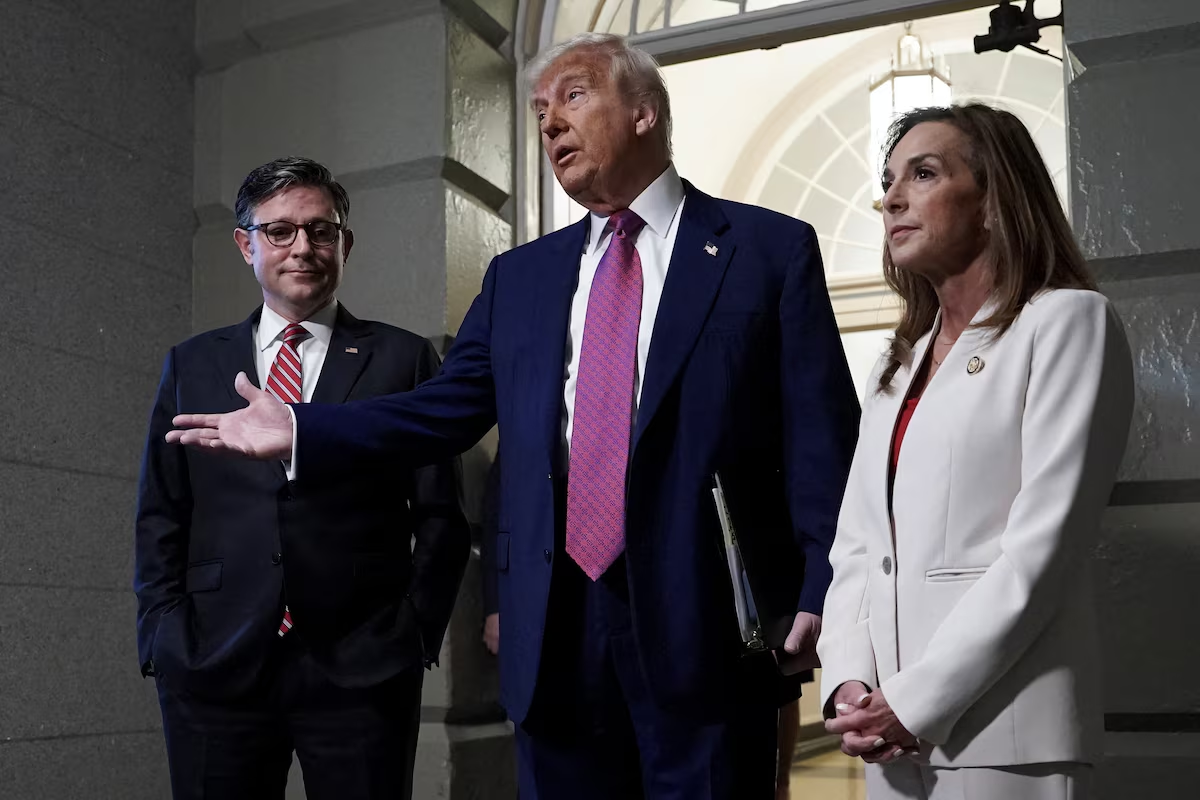As debate over a sweeping tax bill intensifies, U.S. House Republicans are turning to President Donald Trump to unify a fractured party ahead of a crucial vote that could shape America’s fiscal future. With GOP lawmakers divided over the scope and cost of the legislation, Trump’s political capital and influence may be decisive in closing ranks and pushing the bill across the finish line.
The proposed tax package, estimated at over $4.5 trillion, includes extensions of Trump-era tax cuts, new incentives for businesses, and measures aimed at middle-class relief. But it also adds significantly to the federal deficit, prompting opposition from fiscal conservatives and some moderates who fear political backlash in their districts.
Speaker of the House Mike Johnson (R-LA) has been working behind the scenes to bring dissenting Republicans on board, but divisions remain deep. Some hardline members of the House Freedom Caucus want deeper spending offsets, while others in swing districts are wary of being seen as enabling more national debt.
“It’s a great bill if you care about growth,” Johnson told reporters. “But we understand concerns about deficit impacts, and we’re actively working with members to find the right balance.”
Enter Trump. The former president has been personally calling holdouts, urging them to support what he calls a “historic tax revolution” that will “unleash prosperity” and “secure Republican majorities for years.” He’s also planning a closed-door meeting with GOP lawmakers later this week at Mar-a-Lago to hammer home the bill’s political importance.
“Republicans need to come together,” Trump said during a recent rally in Pennsylvania. “This is our chance to deliver for working Americans and show the country we can govern with strength.”
The bill proposes making permanent the 2017 individual tax cuts set to expire in 2026, lowering corporate tax rates further from 21% to 18%, and expanding child tax credits. It also includes controversial provisions such as eliminating certain renewable energy subsidies and scaling back deductions tied to state and local taxes (SALT), sparking criticism from lawmakers in high-tax states like New York and California.
House Democrats are uniformly opposed, arguing the bill overwhelmingly favors corporations and the wealthy. “This is another trickle-down giveaway masquerading as reform,” said House Minority Leader Hakeem Jeffries (D-NY). “It does nothing for struggling families and explodes the deficit.”
The Congressional Budget Office has not yet released a full score of the bill, but early estimates suggest it could add more than $2 trillion to the national debt over the next decade. Republicans argue that growth from tax cuts will offset the costs, citing projections from conservative think tanks.
Trump’s involvement has energized his base within Congress, but even some allies are calling for tweaks. Representative Thomas Massie (R-KY) warned that failure to incorporate spending restraints could create long-term fiscal problems. “We can’t just keep cutting taxes without controlling spending. That’s the road to ruin,” he said.
Still, many Republicans believe Trump’s popularity with the GOP base—and his influence on primary races—gives him the leverage to bring skeptical members into line. With a narrow majority in the House, the party can afford to lose only a few votes.
The Senate is also expected to weigh in once the House vote is complete, and any final package will need to reconcile differences between chambers. But for now, House Republicans are focused on one thing: unity.
A vote is expected as early as next week. Whether Trump’s intervention is enough to seal the deal will be a major test of his legislative clout in his second term—and a preview of the political dynamics heading into the 2026 midterms.
Source: Reuters



